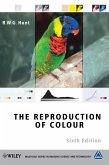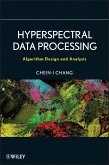This book brings together the relevant thinking on HDR learning from artists (painters and photographers), scientists (optics and vision science), imaging engineers (silver-halide film, silicon sensors and camera-, printer- and display-designers), and image processing experts (algorithms and computer hardware). It explains how human vision is more interested in the relationship of image pixel values than a pixel's absolute value, and the importance of spatial image processing. It also explores optics and psychophysics and includes information on vision science describing human responses to HDR images.
Rendering High Dynamic Range (HDR) scenes on media with limited dynamic range began in the Renaissance whereby painters, then photographers, learned to use low-range spatial techniques to synthesize appearances, rather than to reproduce accurately the light from scenes. The Art and Science of HDR Imaging presents a unique scientific HDR approach derived from artists' understanding of painting, emphasizing spatial information in electronic imaging.
Human visual appearance and reproduction rendition of the HDR world requires spatial-image processing to overcome the veiling glare limits of optical imaging, in eyes and in cameras. Illustrated in full colour throughout, including examples of fine-art paintings, HDR photography, and multiple exposure scenes; this book uses techniques to study the HDR properties of entire scenes, and measures the range of light of scenes and the range that cameras capture. It describes how electronic image processing has been used to render HDR scenes since 1967, and examines the great variety of HDR algorithms used today. Showing how spatial processes can mimic vision, and render scenes as artists do, the book also:
Gives the history of HDR from artists' spatial techniques to scientific image processing
Measures and describes the limits of HDR scenes, HDR camera images, and the range of HDR appearances
Offers a unique review of the entire family of Retinex image processing algorithms
Describes the considerable overlap of HDR and Color Constancy: two sides of the same coin
Explains the advantages of algorithms that replicate human vision in the processing of HDR scenes
Provides extensive data to test algorithms and models of vision on an accompanying website
www.wiley.com/go/mccannhdr
Rendering High Dynamic Range (HDR) scenes on media with limited dynamic range began in the Renaissance whereby painters, then photographers, learned to use low-range spatial techniques to synthesize appearances, rather than to reproduce accurately the light from scenes. The Art and Science of HDR Imaging presents a unique scientific HDR approach derived from artists' understanding of painting, emphasizing spatial information in electronic imaging.
Human visual appearance and reproduction rendition of the HDR world requires spatial-image processing to overcome the veiling glare limits of optical imaging, in eyes and in cameras. Illustrated in full colour throughout, including examples of fine-art paintings, HDR photography, and multiple exposure scenes; this book uses techniques to study the HDR properties of entire scenes, and measures the range of light of scenes and the range that cameras capture. It describes how electronic image processing has been used to render HDR scenes since 1967, and examines the great variety of HDR algorithms used today. Showing how spatial processes can mimic vision, and render scenes as artists do, the book also:
Gives the history of HDR from artists' spatial techniques to scientific image processing
Measures and describes the limits of HDR scenes, HDR camera images, and the range of HDR appearances
Offers a unique review of the entire family of Retinex image processing algorithms
Describes the considerable overlap of HDR and Color Constancy: two sides of the same coin
Explains the advantages of algorithms that replicate human vision in the processing of HDR scenes
Provides extensive data to test algorithms and models of vision on an accompanying website
www.wiley.com/go/mccannhdr








